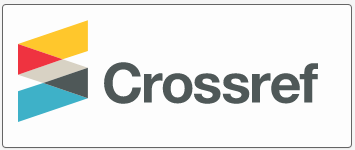Spatial Features Encoded in the Preverbs of Zan Languages Group
DOI:
https://doi.org/10.52340/idw.2021.506Keywords:
Megrelian and Laz, semantic of space, motion verbs, preverbsAbstract
Preverb in Zan language groups (Megrelian and Laz languages) is a principal prefix which, in combination with verb roots and stems referring to dynamicity and stativity (in association with other functional elements), is involved in organizing of space, and by means of which we establish spatial relations.Similarly to other Kartvelian languages, spatial features, encoded in the Zan preverb, in fact describe a direction (landmark, path) of movement of a subject (figure) of motion and its relation with other im/mobile objects in space (person, thing). As different from simple ones, Zan derived preverbs provide information about topological or landscape features of a place; therefore, we refer to them as locative, while to simple ones – as orienting.
In Zan preverbs, encoded spatial categories reveal according to individual kinds:
- path /trajectory + orientation (vertical and horizontal)
- path + deixis/reference (egocentric orientation)
Verbal spatial categories reveal in a combined way within a preverb; therefore, they can be assumed as models made up of these categories as of simple values; for instance, for dynamic verbs:
- {path + orientation + subject deixis/referent absolute}
- { path + orientation + personal deixis/referent variable}
- {non-targeted motion without a referent}
For stative verbs:
- {location + subject deixis/referent}
Owing to their function, derived preverbs encode locative and landscape features of an area (place), making the semantic structures of derived preverbs much more complicated.
Downloads
References
Bickel B. (2001): Deictic Transposition and Referential Practice in Belhare. Journal of Linguistic Anthropology 10: 224-247.
Бюллер К. (2000): Теория языка. Репрезентативная функция языка. თაგ¬მა¬ნი გერ¬მა¬ნუ¬ლი¬დან. Москва: Прогресс.
Burenhult N. (2008): Spatial coordinate systems in demonstrative meaning. Linguistic Typology 12: 99-142.
გე¬რსამია რ. (2020): სივრცისა და მოძრაობის ენობრივი რეპრეზენტაცია. ლაზური ენის მონაცემთა ანალიზი. თბილისი. 2020. ილიას სახელმწიფო უნივერსიტეტი.
Danziger, E. (2003): Deixis, Gesture and Spatial Frame of Reference. CLS 39. 2nd ed. The University of Chicago: Chicago Linguistic Society 105-122.
დო¬ღო¬ნა¬ძე ქ. (2010): რე¬ფე¬რენ¬ცია რო¬გორც ტექ¬სტობ¬რი¬ვი ფე¬ნო¬მე¬ნი და რო¬გორც ლინ¬გვო-კულ¬ტუ¬რო¬ლო¬გი¬უ¬რი პრობ¬ლე¬მა (PhD დი¬სერ¬ტა¬ცია). ქუ¬თა¬ი¬სი.
Lyons, J. (1976): ,Deixis as the source of reference in KEENAN. E.L. pp. 61-83.
Levinson, S. C. (1983): Pragmatics. Cambridge: Cambridge University Press.
Levinson, S. C. (1996): In prteparation Space in Language and Cognition: Explorations in Linguistic Diversity. Cambridge: Cambridge University Press.
Levinson, S. C. (2003): Space in language and cognition: Explorations in cognitive diversity. Cambridge: Cambridge University Press.
Плунгян, В. А., (1999): К типологии глалольной ориентации. Логический анализ языка. Языки динамического мира (red. Arhtunova N., Watunovski, I.) Дубна. Str. 205-223.
Плунгян, В. А. (2002): О специфике выражения именных пространственных характеристик в глаголе: категория глагольной ориентации: Grammatikalizaci% prostranctven¬njx znaqeniy v %zjkax mira. Moskva: Russkie slovarj.
Talmy L. (1985): Lexicalization patterns: Semantic structure in lexical forms. In T. Shopen (Ed.), Language Typology and Syntactic Description, vol. 3. pp. 36-149. Cambridge: Cambridge University Press.
Talmy, L. (1991): Path to Realization: A typology of event conflaction. Berkeley Working Papers in Linguistics, pp. 480-519.
Talmy, L. (1996): Fictive Motion in Language and ‘Ception’. In P. Bloom, M. A. Peterson, L. Nadel, & M. F. Garrett (Eds.), Language and Space, 211-276, Cambridge (MA): MIT Press.
Talmy. L. (2000): Toward a Cognitive Semantics, Vol. 1&2. Cambridge. MIT Press.
Fillmore, C. J. (1997): Lectures on Deixis. Stanford. CA: CSLI Publication
ქობალავა ი. (2020): სივრცისა და მოძრაობის ენობრივი რეპრეზენტაცია. მეგრული ენის მონაცემთა ანალიზი. თბილისი. 2020. ილიას სახელმწიფო უნივერსიტეტი.
შა¬ნი¬ძე ა. (1973): ქარ¬თუ¬ლი ენის გრა¬მა¬ტი¬კის სა¬ფუძ¬ვლე¬ბი, თბი¬ლი¬სი.
ჩი¬ქო¬ბა¬ვა ა. (1936): ჭა¬ნუ¬რის გრა¬მა¬ტი¬კუ¬ლი ანა¬ლი¬ზი, თბი¬ლი¬სი: მეც¬ნი¬ე¬რე¬ბა¬თა აკა¬დე¬მია / ჩი¬ქო¬ბა¬ვა 2008: შრო¬მე¬ბი III, ჭა¬ნუ¬რის გრა¬მა¬ტი¬კუ¬ლი ანა¬ლი¬ზი (ტექ¬სტე¬ბი¬თურთ). თბი¬ლი¬სი: ენათ¬მეც¬ნი¬ე¬რე¬ბის ინ¬სტი¬ტუ¬ტი.







